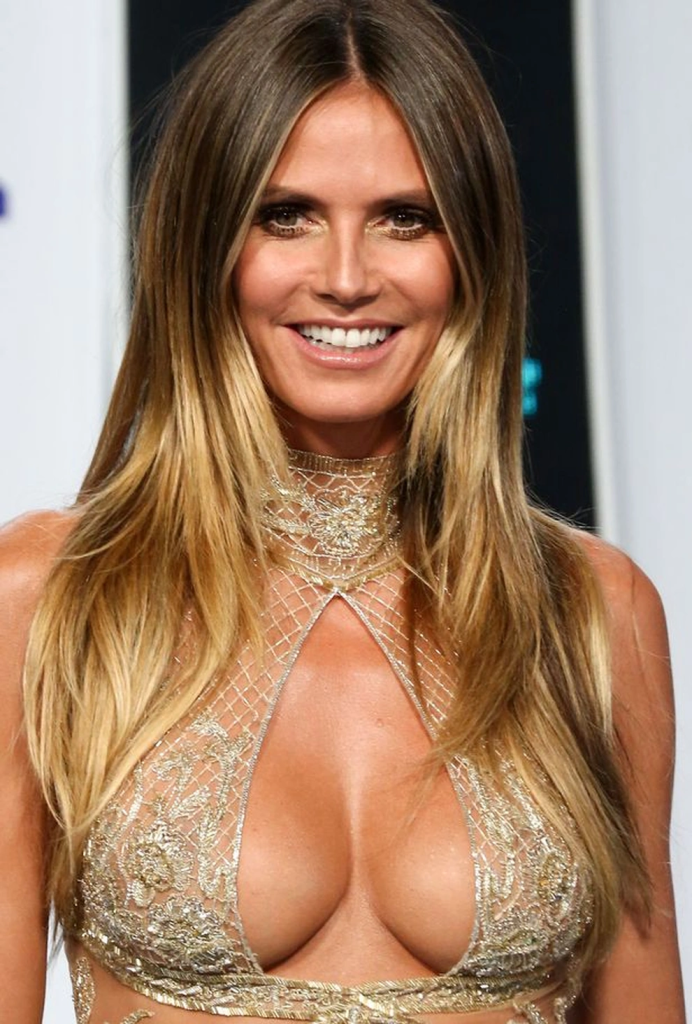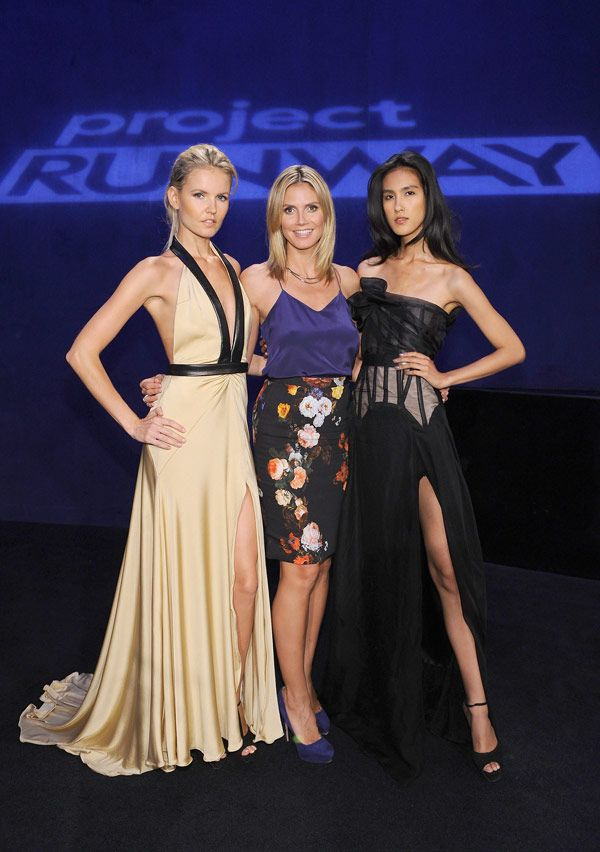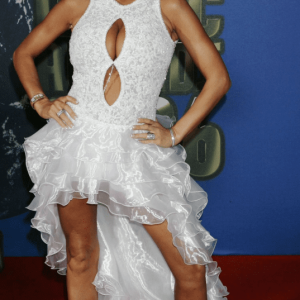Heidi Klum has long been a global symbol of elegance, business acumen, and star power. But it was her groundbreaking work as host and executive producer of Project Runway that changed the trajectory of fashion television forever. Debuting in 2004, the show introduced a new wave of creativity to reality TV, and Klum’s leadership played a vital role in turning it into a cultural phenomenon.

Setting the Stage: A New Kind of Reality Show
When Project Runway first aired, reality TV was still largely dominated by survival games and musical competitions. Into this landscape came a show that took a different approach—spotlighting the artistic process of fashion design, under pressure and in real time. Contestants competed to create original clothing pieces within strict time limits and tight budgets, all while being judged by industry professionals.
At the heart of this ambitious concept was Heidi Klum—a fashion icon in her own right, who brought years of experience as an international supermodel and businesswoman. Her presence immediately gave the show credibility and appeal.
Video: Project Runway Heidi Klum – You’re OUT
A Host Who Did More Than Host
Heidi Klum wasn’t just the face of Project Runway—she was its spirit. As host and executive producer, she helped shape every element of the show’s tone and direction. Her signature line—“One day you’re in, and the next day you’re out”—became iconic, instantly recognizable to fans across the globe.
More than just a catchphrase, that statement reflected the show’s high stakes. Klum’s role wasn’t limited to introducing challenges or announcing eliminations—she actively engaged with designers, offered thoughtful critiques, and encouraged innovation. Her feedback combined fashion knowledge with heartfelt mentorship, elevating her beyond the typical reality TV host.
Creating a Space for Real Fashion on Mainstream TV

Before Project Runway, fashion on television was often portrayed as surface-level glitz and glamour. Klum and her team changed that. Under her guidance, the show peeled back the curtain, revealing the hard work, creativity, and emotional investment that go into designing clothes.
The series highlighted everything from fabric sourcing and garment construction to personal storytelling through fashion. It was insightful, educational, and wildly entertaining. And through it all, Klum brought poise, enthusiasm, and genuine investment in each designer’s journey.
Championing Creativity and Diversity

One of the most groundbreaking aspects of Project Runway was its celebration of diversity. Contestants from a wide range of backgrounds, cultures, and identities were given equal space to shine—and Klum was at the forefront of fostering this inclusive atmosphere.
By focusing on unique voices and ideas, the show became a platform for underrepresented talent in the fashion world. Klum’s ability to connect with contestants from all walks of life helped turn the series into a nurturing ground for innovation, empathy, and authentic storytelling.
Critical Acclaim and Cultural Impact
The influence of Project Runway spread rapidly. What started as a niche fashion competition quickly became a ratings juggernaut with a devoted fanbase. Under Klum’s leadership, the show earned multiple Emmy Awards, including Outstanding Reality-Competition Program, setting a new standard for unscripted television.
Klum herself received numerous accolades for her hosting and producing work, including Emmy nominations that underscored her role in the show’s overwhelming success. She didn’t just guide the competition—she built a community and inspired a generation of aspiring designers.
Launching New Careers in Fashion
Video: Heidi Klum Wears All SI Swimsuit Covers For 50th Anniversary | Legends | Sports Illustrated Swimsuit
Perhaps the most powerful legacy of Project Runway is the real-world success of its contestants. Many alumni have gone on to create their own fashion labels, dress celebrities, and work for top brands. And behind their success stories is a common thread—Heidi Klum’s unwavering support.
She believed in nurturing talent and spotlighting hard work. Her encouragement gave many contestants the confidence and visibility they needed to thrive in a competitive industry. In many ways, Klum wasn’t just a host—she was a mentor who helped transform lives.
Expanding Her Legacy Beyond the Runway
After her departure from Project Runway, Klum didn’t slow down. She co-created and hosted Making the Cut, another fashion-forward competition series that allowed her to continue championing up-and-coming designers. This move proved that her influence in the fashion entertainment space was far from over.
Outside of television, Klum has maintained a strong presence in modeling, business, and philanthropy. Her ability to balance high fashion with approachability has made her one of the most trusted and admired figures in the industry.
Why Heidi Klum’s Project Runway Era Still Matters

Even years after its debut, Project Runway remains one of the most respected reality TV series in history, largely thanks to Klum’s involvement. She helped create a show that wasn’t just entertaining—it was aspirational and empowering. It gave viewers a new appreciation for the art of fashion and showcased how powerful storytelling can emerge from the most unexpected places.
For many fans, Heidi Klum is Project Runway. Her leadership, grace, and passion shaped the series into something far bigger than a television competition. It became a global movement—one that continues to inspire.
Conclusion: A Lasting Legacy in Fashion and Entertainment
Heidi Klum’s time on Project Runway was more than a professional milestone—it was a turning point for fashion on television. Her ability to combine expertise, empathy, and entertainment created a blueprint for future reality shows that value talent and authenticity.
Her influence continues to shape the world of fashion media, and her role in empowering aspiring designers stands as one of her greatest achievements. As a host, producer, and mentor, Klum forever changed the way we see fashion—and for that, she will always be “in.”


